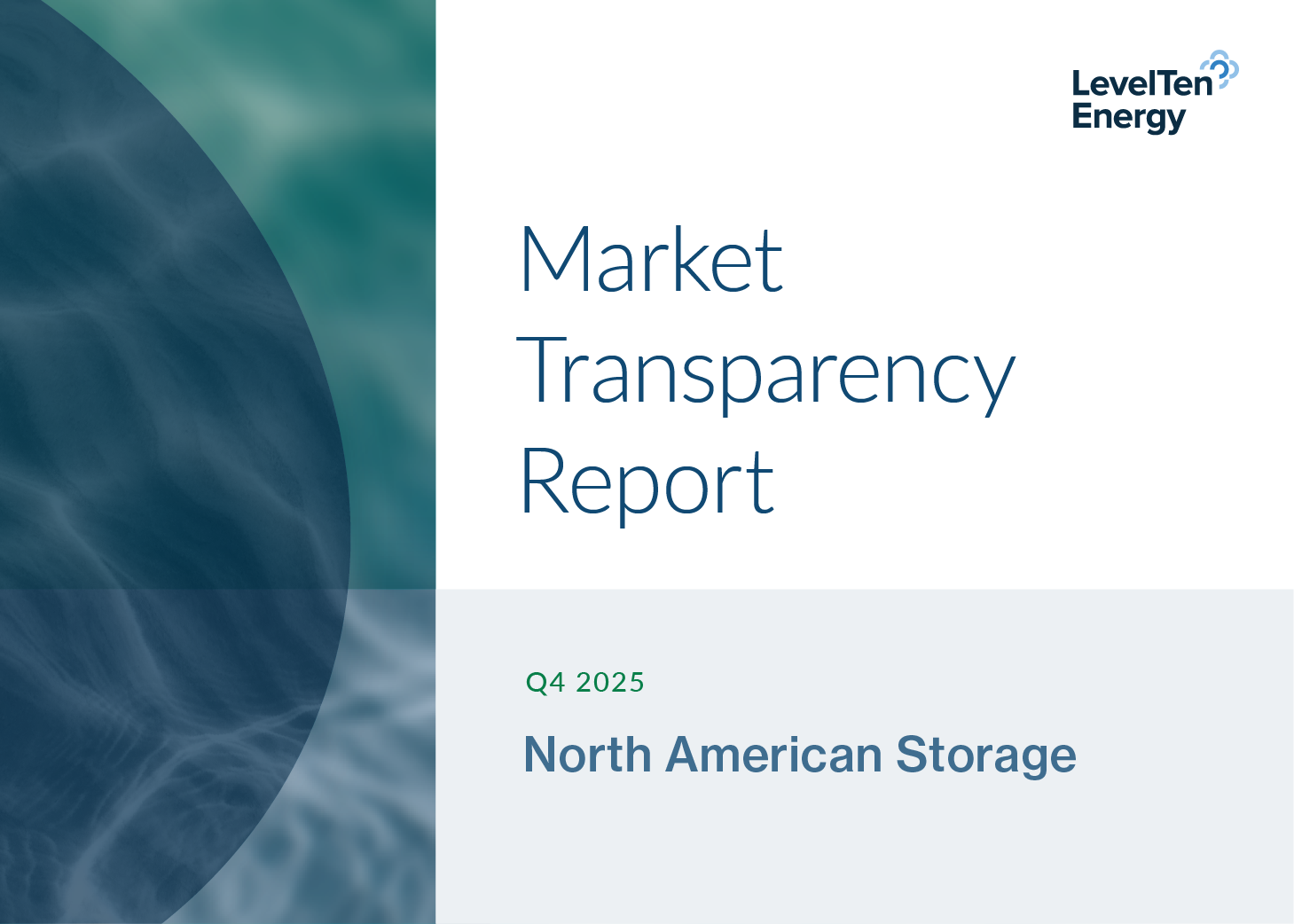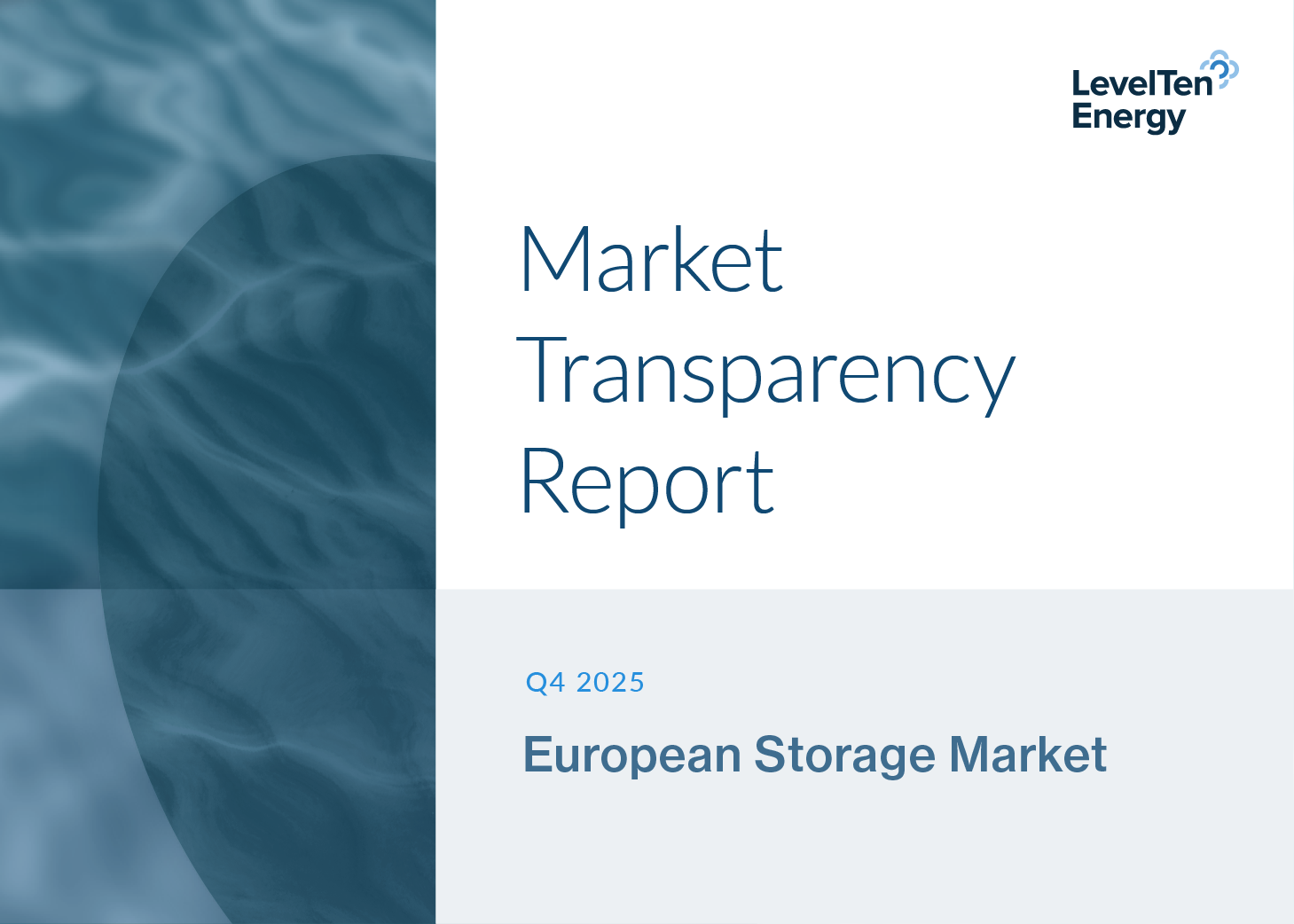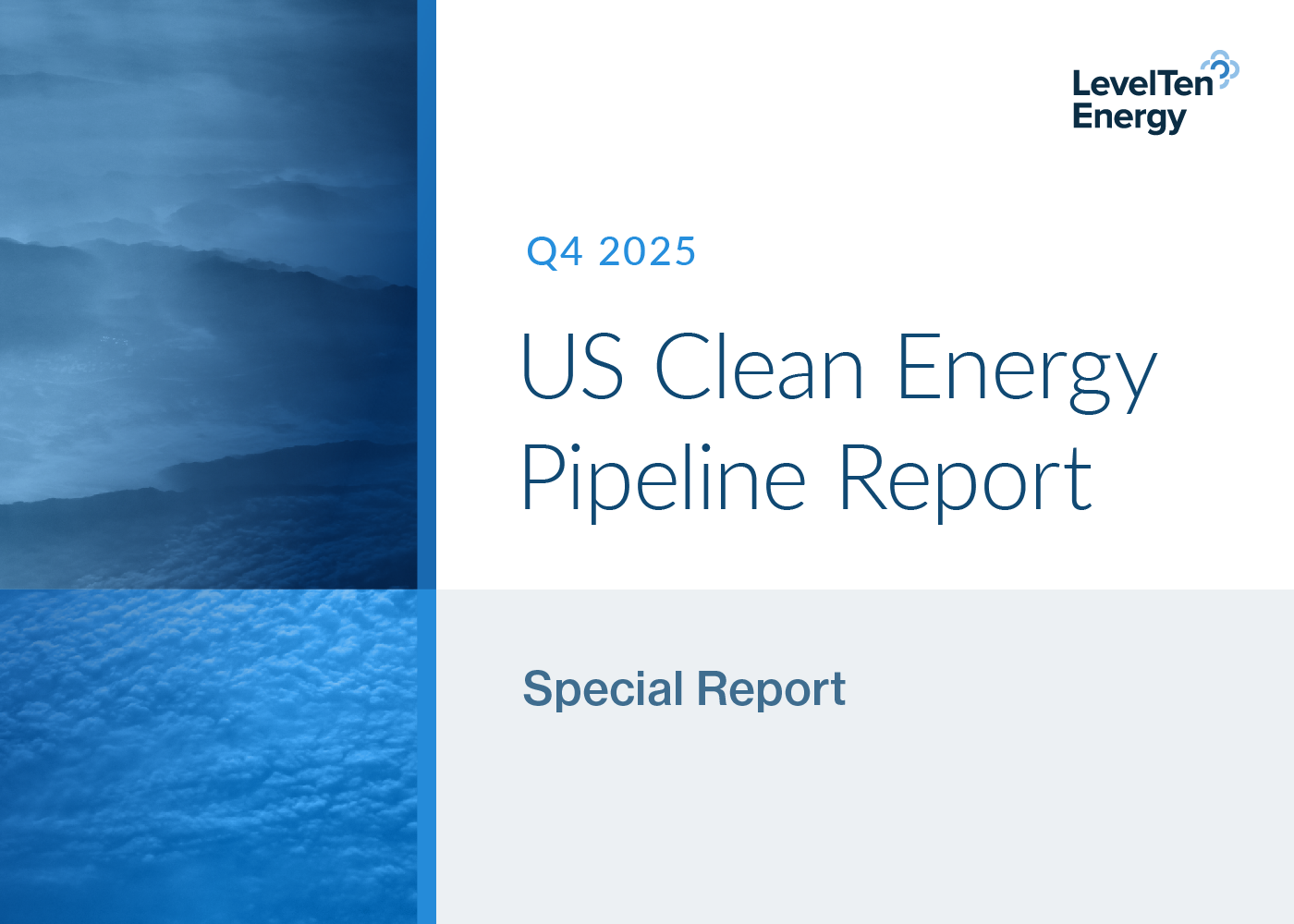On 29 September the European Commission approved a revenue cap of 180€ euros per megawatt-hour on electricity from generators with low marginal costs, including solar and wind. We polled our network of developers with projects on the LevelTen Energy Marketplace, and spoke with LevelTen Energy’s European market experts, Plácido Ostos and Kristian Lande, to explore what effect this cap might have on power purchase agreements, and what ripple effects it might have across the industry.
This article is a preview of the in-depth data and insight that will be available in our Q3 PPA Price Index, publishing October 18. Click here to subscribe to our reports and save 25%.
What does this regulation do, exactly?
First of all, it’s important to understand this is a revenue cap, NOT a price cap, as many publications have been referring to it. The reason for that distinction is because the electricity price is not always equal to the revenue a generator earns for every megawatt-hour they sell.
Generators earn revenue in two main ways; fixed revenues and market-based revenues:
- Fixed revenues come from contracts with governments (via CfD auctions, feed-in-tariffs, and other schemes), or through power purchase agreements with other entities; they’re referred to as “hedges” because they reduce revenue volatility for generators. (These long term contracts aren't the only way to reduce revenue volatility; generators also use other types of hedging mechanisms and financial instruments. Whatever the nature, if the actual revenue exceeds the cap of 180€/MWh, it will be affected by this regulation). The majority of long-term contracts are not producing revenues over 180€ for generators, because they require generators to pass along or redistribute revenue from the spot market to their counterparties. According to Rystad Energy, these contracts represent 60% of the total installed renewables capacity in the EU.
- Market-based revenues are derived from the current market price of electricity. This could come from selling electricity on the spot market or short-term PPAs, which would be included in this category because their price is typically closely linked to the actual market price. According to Rystad, the remaining 40% of renewable energy capacity falls into this category, and is therefore going to be most affected by this cap.
Under the proposal, the price of electricity will still be determined by the cost of the marginal technology used (typically natural gas), but renewable generators will need to pay the difference between that market price and 180€, which will be paid to a government-controlled fund, called a “solidarity contribution.” The Commission says the solidarity contributions should be used to reduce retail electricity bills for households and companies; to foster the reduction of energy consumption; and to support companies in energy intensive industries, conditional upon their investment into renewable energies, energy efficiency, or other decarbonisation technologies.
The cap is set uniformly across the European Union, although member states have the option to implement further caps, and indeed, some have; Greece, for example, set an 85€/MWh cap on renewables. The regulation is set to last for one year, which means that it will have a limited effect on projects under development that are scheduled to become operational in 2024 and beyond.
How will this affect existing long-term power purchase agreements?
The published regulation clarifies that it will not impact most existing long-term power purchase agreements or settlements, because it only applies to revenues after PPA/contract settlements or “true-ups” take place. As long as the PPA price is below 180€/MWh, which applies to the vast majority of long-term PPAs, there will be no change to the way settlements occur.
With that, all as-generated PPAs can breathe, as any single MWh will be valued at the PPA price no matter when it was generated. But uncertainty remains for baseload PPAs, as the regulation leaves to the Member States to determine whether they will apply the regulation when the settlement of the exchange of electricity takes place, or thereafter:
“(31) While applying the cap on market revenues at the time when transactions are settled may be more efficient, it might not always be possible, for instance due to differences in the way wholesale electricity markets are organised in the Member States and across different timeframes. To account for national specificities and to facilitate the application of the cap on market revenues at national level, Member States should have the discretion to decide whether to apply it either when the settlement of the exchange of electricity takes place or thereafter.”
And that little detail is crucial for baseload PPAs, which accept that the intermittent nature of the resource implies hours with deficit and surplus of energy, to be balanced in the market. In normal circumstances, the surplus is expected to compensate for the deficit in the long run. But depending on how this regulation is observed, the seller could find itself buying at market price but selling at the cap. Thus completely unbalancing the contract.
If settlement were to be done considering a longer period, perhaps monthly, actual revenue in baseload PPAs would be much closer to the agreed PPA price, and baseload wouldn’t be affected by the regulation. Otherwise, the chances of baseload PPAs needing to be renegotiated increases dramatically.
How will this affect existing short-term power purchase agreements?
If the short-term PPA has a price higher than 180€/MWh, contracts will likely be renegotiated leveraging “change in law” or “force majeure” clauses. That's because the contract would no longer be reasonable when the offtaker is paying one amount while the generator is receiving a different amount..
What type of renewable energy project developers will be affected?
The wind and solar generators who are making a “windfall” profit off of current electricity prices are those earning market-based revenues, not those with fixed revenues. Some generators, especially recently, have reserved a portion of their capacity for the spot market, as a means to capture high prices (which comes with greater risk). These generators may no longer receive extremely high prices, but 180€ per megawatt hour is still very generous; their internal rate of return will remain extremely high, as the revenue more than covers their costs.
How will this affect PPA supply for corporate offtakers?
According to our survey of 19 developers with projects on the LevelTen Energy Marketplace, 42% said that a price cap of 180€ euros would not change their PPA offer activity, and the same percentage said they will continue to submit some offers, but only for selected opportunities.
It’s important to remember that the cap is supposed to be temporary, so if a project isn’t expected to reach commercial operation until 2024, it might not be affected at all. Projects that are nearing COD will be most impacted, as developers assess the impact this cap will have on the project financials, particularly if a portion of the capacity was reserved for the spot market.
Even with a limit of 180€, the spot market remains an attractive option for developers who want to capture the full revenue potential of today’s market conditions. Financial institutions, which historically demanded a PPA in order to finance a project, are increasingly calculating the risk/reward benefit of financing a project that will rely on revenue from the spot market, and determining that projects without a PPA are still a safe investment. This means that project developers who don’t want or need a PPA have more financing options, potentially reducing the PPA supply available to corporate offtakers.
On the other hand, there is some hope when it comes to supply; these incredibly high wholesale prices will attract a huge amount of investment; fueling development that will increase overall supply of renewable projects, and some of that capacity could be reserved for PPAs.
That said, if Member States choose to enact different caps, it could delay some of this development. According to our survey, 26% of respondents said that if individual countries impose their own price caps, it would reduce their PPA offer activity. If each country enacts different caps and rules, and every proposal needs to be approved, developers and investors will experience a large amount of uncertainty, and could stall projects until that uncertainty is resolved. One of the major risks that renewable energy project developers and owners see is the possibility of countries setting their own cap, potentially at a much lower value. Any delay in investment and development of projects, at these high electricity price levels, comes at an enormous cost.
“Different price setting mechanisms across the continent will have an unintended ripple effect on neighboring markets,” said Kristian Lande, senior director of European Analytics, LevelTen Energy. “Without consensus among 27 countries on the timing and price level, there will be greater uncertainty, which will likely lead to less investment across the board.”
How will this affect PPA prices for new contracts?
PPA prices are expected to continue rising in the near term, due to a supply and demand imbalance. Even before this proposal, supply was struggling to keep pace with demand. Corporations are eager to support energy independence, reduce their emissions, and get some reprieve from high electricity costs, leading to escalating demand despite market volatility. The Commission has also proposed that solidarity contributions be allocated to companies making investments in renewable energy, which could elevate demand for PPAs.
In addition, European governments are expected to sponsor more Contracts for Differences (CfDs), government auctions, and other schemes to incentivize the rapid development of clean energy. This will provide more contractual options for developers, but would have the effect of reducing supply for corporate/private offtakers.
Meanwhile, developers still face many barriers to development, including securing land, permits, interconnection rights, and rising development costs due to inflation and supply chain disruptions. It can take years for a project to be completed, making it difficult to quickly respond to skyrocketing demand.
It’s essential for corporate offtakers to evaluate PPAs with a long-term point of view, rather than reacting to high prices today. Market prices are estimated to remain high over the next 1-3 years, but will drop as more wind, solar, storage and other clean energy projects come online. Offtakers need to calculate projected values for the entire length of the contract using the latest market data to determine which PPAs will deliver the greatest value. That’s where LevelTen’s CFO-Ready Analytics™ and MarketPulse software can help; we calculate projected settlement values using the latest forward curves (and billions of other data points) to help clean energy buyers select the best PPA for their business.
How else might it impact corporate PPAs?
Corporations who can come to the table ready to move quickly will be more successful in securing the available PPA supply. That means securing internal alignment on PPAs prior to executing RFPs, being more flexible than in years past when it comes to contract terms, and providing procurement teams with the resources they need to make quick decisions.
When there is a lot of competition for supply, corporations with lower credit ratings or unique needs may find more options to source clean energy through their retail electricity provider, rather than directly with a project through a PPA. LevelTen partners with retail electricity providers, who use the platform to source clean energy on behalf of their customers, and can connect corporate buyers (and their energy advisors) to retail opportunities.
For more information on how to navigate today’s market conditions, please contact info@leveltenenergy.com; we’d be happy to discuss your needs.
What are some of the unintended consequences that could happen as a result of this regulation?
If enacted, the regulation could affect the industry in other ways:
- Developers who forgo a PPA in favor of the spot market are taking on market risk; PPAs have been a safe, pragmatic way to reduce risk for developers. Only time will tell if this will have negative consequences on the renewable energy industry.
- If non-EU countries, including the UK and Norway, don’t implement similar caps, renewable generators could be incentivized to sell to those countries (where possible); as a result, proposed transmission lines connecting countries may be expedited.
- Some corporations and consumers have a choice to use natural gas or electricity to heat their homes or power their operations. For these electricity buyers, reduced electricity bills could incentivize them to use electricity over natural gas, which could increase electricity demand, and therefore increase natural gas demand, further exacerbating the problem. The Commission is aiming to disincentivise this activity by suggesting that solidarity contributions be used to lower the energy purchase costs of final energy customers, but only under certain volumes of consumption, and only for those committing to energy efficiency or investments in renewables.
- With less incentive to hedge with long-term contracts in such a high-price market (and more government contracts likely to come soon), the market becomes more closed to corporate energy buyers; therefore a higher percentage of the investment in renewable energy will come from public vs. private entities.
- While not related to the cap, it's worth noting that new CfDs from member states can entice developers to build new projects, but they don’t always encourage ideal development activity, such as locating new projects near demand centers, and could lead to higher costs down the road.
LevelTen is monitoring this situation as it develops. If you have any questions or comments, please reach out to your account representative, or contact info@leveltenenergy.com






